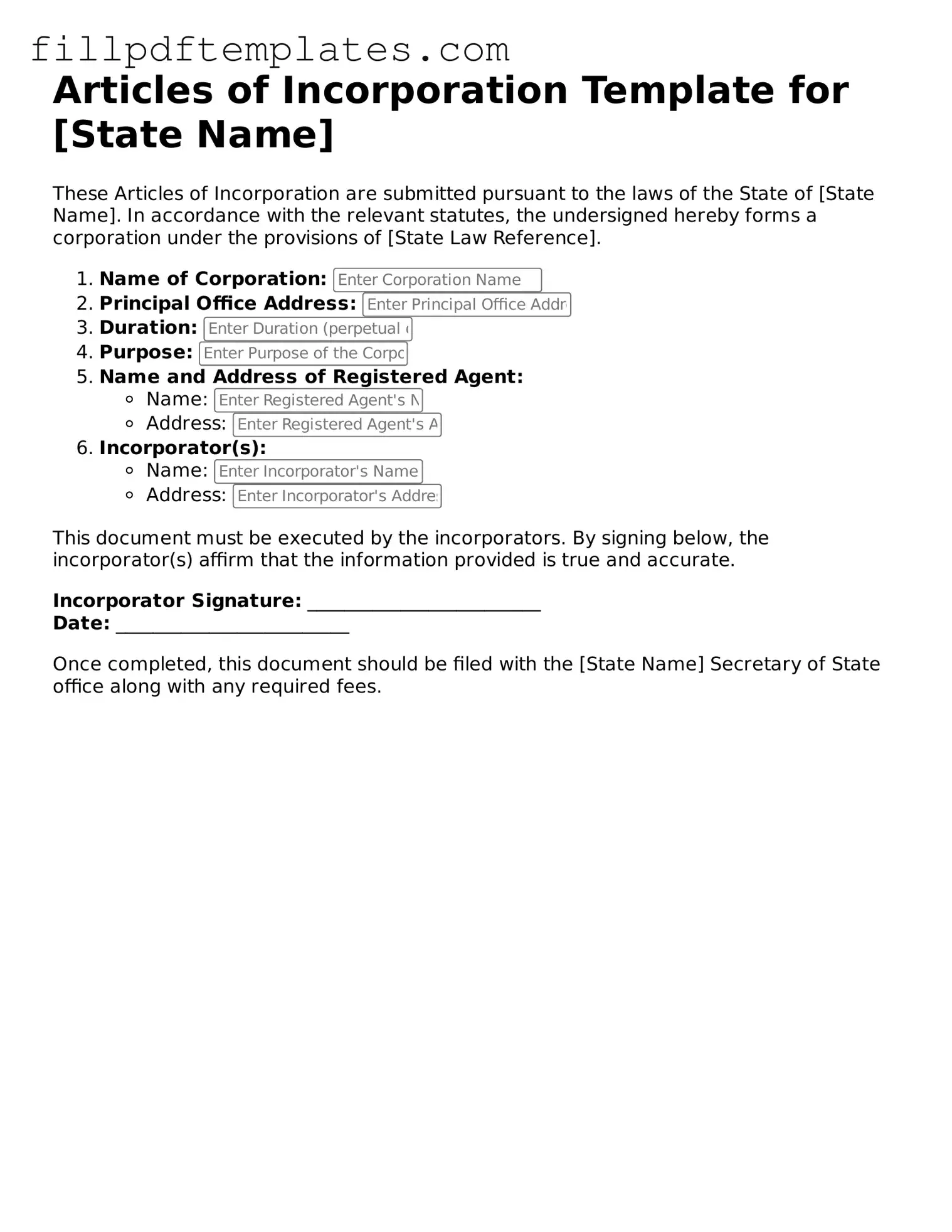Valid Articles of Incorporation Form
The Articles of Incorporation form is a legal document that establishes a corporation in the United States. This form outlines essential details about the business, including its name, purpose, and structure. Understanding how to properly fill out this form is crucial for anyone looking to start a corporation.
Ready to take the next step? Fill out the form by clicking the button below.
Get Form
